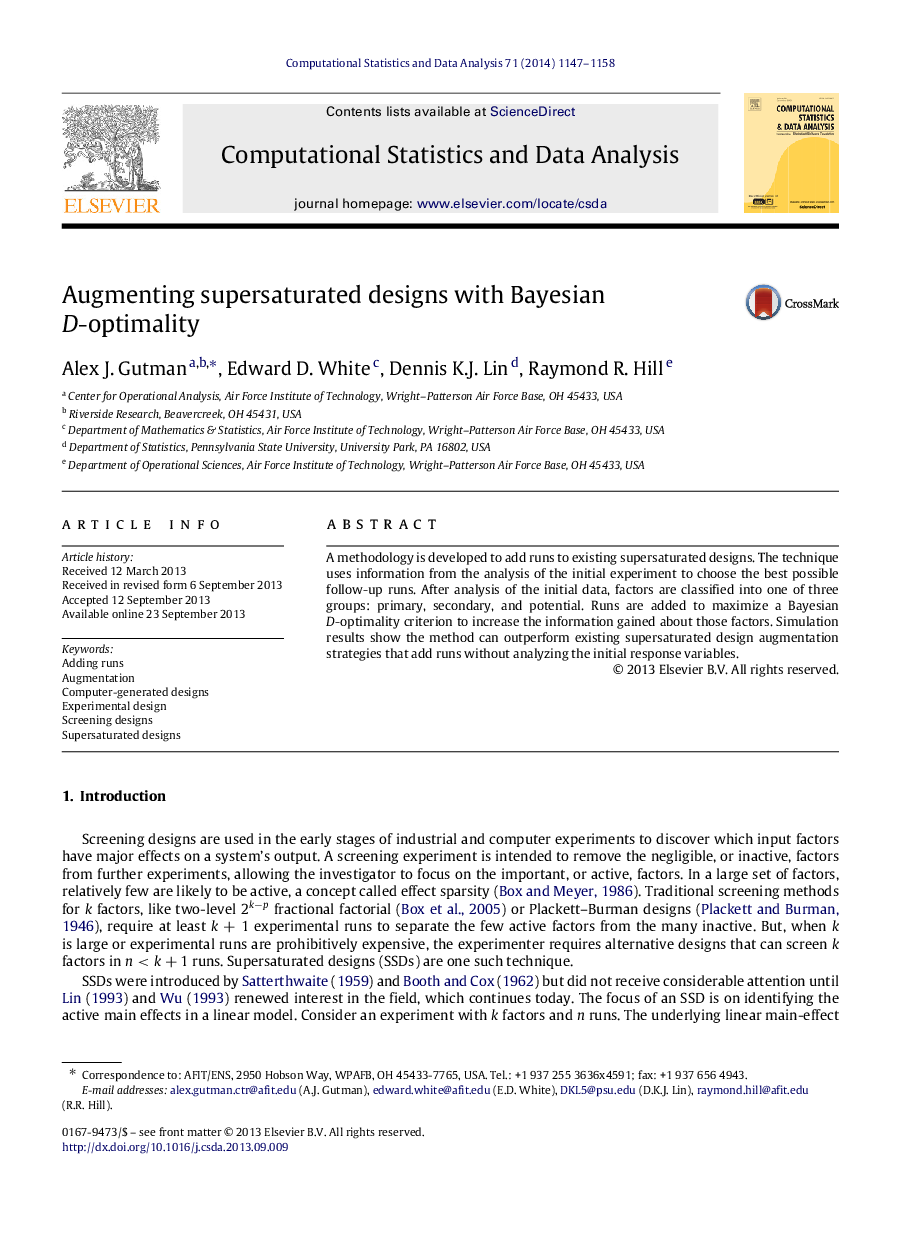| Article ID | Journal | Published Year | Pages | File Type |
|---|---|---|---|---|
| 6870648 | Computational Statistics & Data Analysis | 2014 | 12 Pages |
Abstract
A methodology is developed to add runs to existing supersaturated designs. The technique uses information from the analysis of the initial experiment to choose the best possible follow-up runs. After analysis of the initial data, factors are classified into one of three groups: primary, secondary, and potential. Runs are added to maximize a Bayesian D-optimality criterion to increase the information gained about those factors. Simulation results show the method can outperform existing supersaturated design augmentation strategies that add runs without analyzing the initial response variables.
Related Topics
Physical Sciences and Engineering
Computer Science
Computational Theory and Mathematics
Authors
Alex J. Gutman, Edward D. White, Dennis K.J. Lin, Raymond R. Hill,
